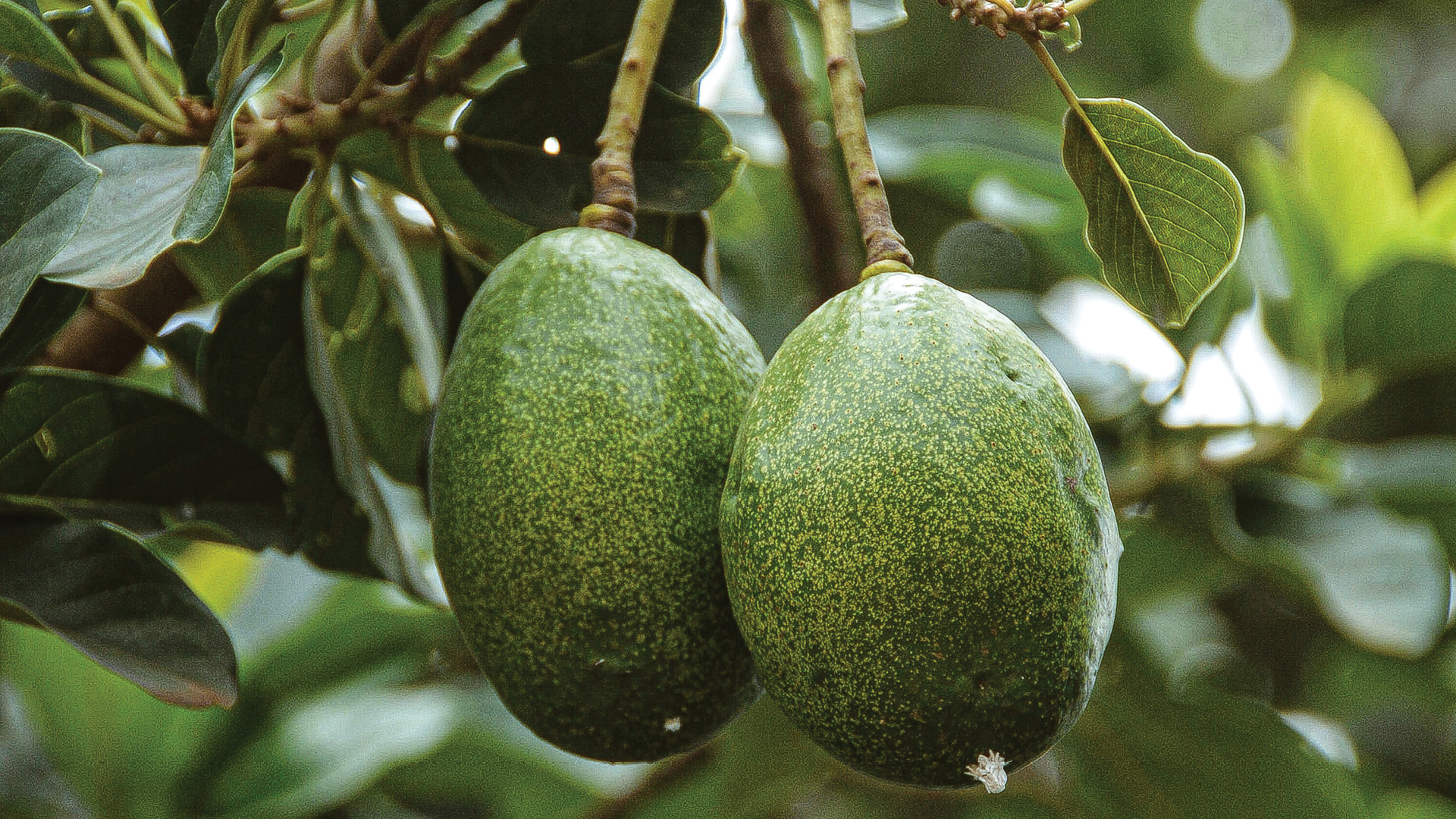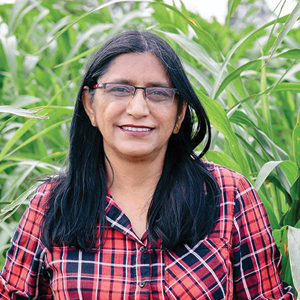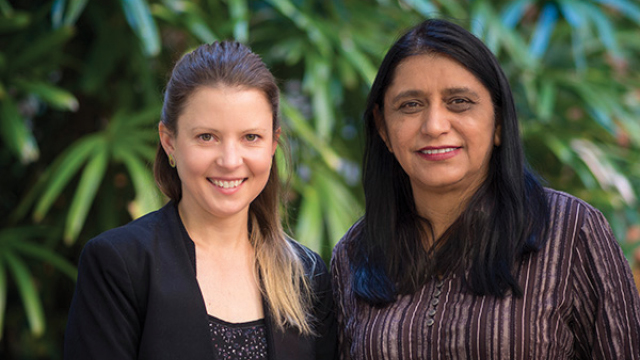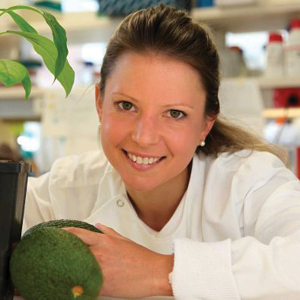Bushfires, floods, droughts, cyclones, new pests, new diseases and to top it all, COVID-19; there’s no shortage of factors that threaten Aussie agriculture and the three meals a day we sometimes take for granted.
This extended article from ATSE is well suited to Biology students in Years 6, 7, 9 and 10 who are learning about sustainable food in Australia and strategies to future-proof Australian agriculture.
Word Count: 1759

Brutal scenes in supermarkets in the wake of COVID-19 gave us a glimpse of the consequences when food supply chains seemed uncertain. But human-made global warming is a far more serious and long-term threat to the future of human nutrition.
Climate change is impacting the production of many crops by influencing weather patterns and temperature ranges, and pests, weeds and diseases. It makes it clear that it is absolutely non-negotiable that we provide farmers with the support, tools and technologies to feed the world.
Food security is not just an issue for the 10 billion people who will walk on planet earth by 2050 with their daily need of two trillion calories. It’s an issue for us today, next season, next year and every year after that.
We must not forget that even right now, almost 800 million people are chronically hungry and two billion suffer micronutrient deficiencies. We need transformative change in agriculture and food systems worldwide.
In March 2018, the National Farmers Federation presented its vision for 2030 of growing Australian agriculture into a $100 billion industry. To deliver that outcome, agriculture will need to grow by almost 60 per cent in the next 10 years.
Technology and innovation was identified as a key driver to benefit Australia’s food and agribusiness sector. Here are a few key technologies that can shape the agricultural practices of tomorrow.
Gene technologies
Developing new genotypes of plants is a primary strategy for adaptation to climate change. Advances in genome sequencing and associated molecular and bioinformatics tools allow researchers and breeders to discover, predict and track the best climate-resilient genotypes at the DNA level.
Combined with speed-breeding programs being pioneered at the University of Queensland, this can allow us to breed climate resilient genotypes of a number of species up to six-times faster and cut years off traditional breeding practises.

Genetic modification (GM) provides a more direct way to integrate ideal genes into an existing commercial genetic background. GM cotton, corn, soybean, canola and sorghum contribute to the US$5 trillion global agribusiness industry.
In Australia, delays in adopting GM canola have resulted in an extra 6.5 million kg of herbicides, 8.7 million litres of diesel, 24.2 million kg of greenhouse gas and compound emissions, and economic loss of 1.1 million metric tonnes of canola.
However, a GM approach faces ongoing political, social and regulatory challenges. It also depends on technical amenability of the species to genetic modification. Gene editing is the new powerful entrant in this field to confer crops with a fitness advantage.
The biological scissors of CRISPR (clustered regulatory interspersed short palindromic repeats) can switch off an undesirable gene or insert desired sequences into the genome. What once looked like science fiction to precisely edit genes is now poised to change the landscape of breeding.
In many jurisdictions including Australia, some gene editing processes have been legislated as non-GM to support faster technology deployment.
The decision on how best to alter genotypes to maintain and improve productivity into the future is not just a technical one. It will depend on industry and public acceptance plus our ability to translate new genotypes to field conditions quickly.
And it’s not just about adaptation; plants are in fact the ultimate technologies for climate change mitigation. The question of whether we can engineer or breed crop plants to be even more effective at turning carbon into food is being addressed with important outcomes for both climate and food security.
Protected cropping
While nature is almost boundless in its genetic potential to deliver improved genotypes, there are upper limits to the biological capacity of plants to survive extreme conditions. Protected cropping systems are climate-controlled facilities that enable consistent, year-round crop production regardless of external conditions, thus safeguarding foods from climate change.
In addition, protected cropping has a much lower environmental footprint than field-grown crops. Reduced use of pesticides and fertilisers, recycling the majority of water and eliminating run-off are distinct advantages.
Currently, Australian growers use protected cropping primarily for cut flowers, tomatoes and leafy greens. However, less than a third of Australian vegetable growers use these facilities. The industry is expanding at four to six per cent each year, and the potential return on investment for high-tech, greenhouse vegetable enterprises is around 20-25 per cent each year.
Vertical framing adds another dimension to protected cropping. Investment in protected cropping for a greater diversity of crops will not only safeguard Australia’s food supply but bring new and desirable varieties of fruits and vegetables to consumers and niche markets.
Furthermore, these facilities can be built on non-arable land, such as disused mine sites, and can be made energy-neutral with water and nutrient recycling and solar energy.
Sustainable crop protection
Pests and diseases represent a major constraint for increased productivity. It’s estimated that $20.6B of the total value of crop production in Australia in 2015-2016 could be attributed to successful crop protection.

By controlling fungal plant diseases alone, farmers can save 125 million tonnes of food each year — enough to feed 600 million people.
Major issues with current crop protection practices include:
- growing resistance diseases
- not targeting specific pathogens
- persistence of residues
- run-off into our precious waterways
- potential harm to human health and the environment.
Indeed, harmful concentrations of pesticides have been detected up to 60 km inside the Great Barrier Reef World Heritage Area.
The general public is now seeking a transition to chemical pesticide-free agriculture. The key question is how innovation in ag-tech can deliver alternatives to reduce the use of chemical-based fungicides, while maintaining crop production, into the future.
One example of an RNA-based biopesticide is BioClay technology developed at the University of Queensland. This is a non-GM, safe, sustainable biological crop protection platform.
BioClay works almost like nature versus nature where a gene sequence from the pathogen is used to kill the pathogen itself without the need for any genetic modification.
As climate change creates variations in pest and pathogen populations, we need to develop a multi-pronged approach that combines traditional and innovative approaches to manage these threats.
Digital revolution
From GPS to remote sensing, UAVs (drones), AI and blockchain, digital and data-driven technology is transforming agriculture across the supply chain. From powerful crop forecasting models down to daily surveillance with UAVs and field-sensors, these technologies allow farmers to both plan ahead of time and respond instantly, to maximise productivity in a changing landscape.
The Aussie-developed Agricultural Production Systems sIMulator (APSIM) creates virtual fields to study how changing plant genetics, soil health, climate and farm practices influences socio-economic and ecological outcomes. GPS-guided UAVs and field sensors allow site-specific and even plant-specific data to be available to the farmer at the click of button on their laptop or smartphone.

This results in is being able to choose the best genotypes for their fields and also to plan when and where in the field to water, fertilise, apply growth regulators or disease control, harvest and prune — so-called precision agriculture.
At the breeding level, AI platforms developed in Australia such as FastStack can track the flow of valuable genes in breeding programs to choose the best combinations for crop and livestock performance.
The digital revolution doesn’t just help us adapt to predicted change. It allows us to react and recover in the event of natural disaster. Digital Agricultural Services revealed that the unprecedented bushfires this year burned almost 2.5M Ha of agricultural land (29% of all land burned), with Queensland the hardest hit.
UAVs trained to detect imminent bushfire threats and AI models to predict burning behaviour are already being developed in order to help prioritise firefighting and relief efforts at key sites in future.
Innovative plant propagation
Adequate supply of superior, disease-free planting material are a key cog in the production supply chain. Tissue culture technology for mass production of plants (especially difficult-to-propagate crops, new improved varieties and selections, and gene-edited or modified crops) can be a valuable resource to sustainably and rapidly provide large numbers of adaptable genotypes.
As an example, the world’s first plant stem cell-based propagation of avocadoes developed at the University of Queensland can generate 500 plants from one small cutting from a mature tree. This technology could also support Australian native foods, working together with Indigenous Australians who have passed down the knowledge of their incredible properties. Many of these native foods are difficult to propagate but offer incredible nutritional diversity and are already highly adapted to harsh Australian conditions. Tissue culture tools can also conserve our precious biodiversity of flora that cannot be stored as seed.
This includes many of Australia’s rainforest trees at significant risk of extinction due to climate change and the threat of intensifying bushfires such as seen in the devastating 2019-2020 summer season. We can safeguard our crops as well as our biodiversity, which contains crops and medicines of the future and is essential to the health of our habitat.
Final thoughts
“World free from hunger and malnutrition, where food and agriculture contribute to improving the living standards of all, especially the poorest, in an economically, socially and environmentally sustainable manner”. The vision of the Food and Agriculture Organisation, captures the essence of what the future should look like. It embodies a vision that goes beyond the divide of “developed” and “developing” countries.
Sustainable development is a universal challenge and the collective responsibility of all countries. It requires fundamental changes in the way all societies produce and consume food. In a globally interconnected world, the threats posed by climate change, the intensification of natural disasters and upsurges in transboundary pests and diseases, and the need to adjust to major changes such as COVID-19 points to the fact that we cannot operate under a business-as-usual scenario.
We have a supreme opportunity and responsibility now as scientists, politicians, farmers, growers, consumers and human beings to affect real change that supports a climate-safe future and the future of food production for generations to come. Design of regulations and public acceptance for new technologies will be critical to achieving outcomes at a pace that has become a necessity.
Where possible our modern farming systems should also learn from the wisdom of Indigenous peoples, who have practised various forms of agriculture and sustainable land management in changing climates throughout the last few millennia.
It requires leadership and cohesion across the ecosystem to set strategic priorities and drive a more coordinated and cross-domain approach.
Recognising different pathways to success, guiding young minds to deliver for the future, and innovation that goes beyond discipline, organisations, governments, industries and geographies are all vital to creating more efficient, inclusive and resilient agriculture for us all.
Written by Professor Neena Mitter, FTSE and Dr Alice Hayward.
Neena Mitter is Director of the QAAFI Centre for Horticultural Science at The University of Queensland, and the ARC Research Hub for Sustainable Crop Protection. She is internationally recognised for developing and crop-protecting ag-nano “BioClay” spray and stem cell-based avocado propagation. Elected an Academy Fellow in 2019, Professor Mitter is an active deputy member of the Leadership Council of Cultural Diversity.
Alice Hayward is a plant molecular biologist developing the world’s first high-multiplication tissue culture pipeline for avocado propagation. She is a Post-Doctoral Fellow with Advance Queensland and the Queensland Alliance for Agriculture and Food Innovation.
This article is reproduced with the kind permission of Professor Neena Mitter FTSE, University of Queensland and Dr Alice Hayward, Advance Queensland and the Queensland Alliance for Agriculture and Food Innovation.
Years: 6, 7, 9, 10
Login or Sign up for FREE to download a copy of the full teacher resource






